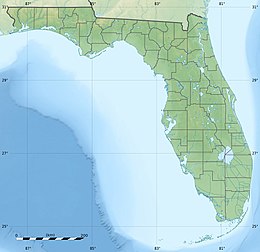This article needs additional citations for verification .(April 2020) |
| Geography | |
|---|---|
| Location | North Atlantic |
| Coordinates | 30°31′16″N81°28′49″W / 30.52111°N 81.48028°W |
| Administration | |
| State | Florida |
| County | Duval |
| Additional information | |
| Official website | Official website |
Black Hammock Island is an island located in the Northside area of Jacksonville, Florida, in the United States. The island is surrounded by marsh, and is almost directly adjacent to the Timucuan Ecological and Historic Preserve. Cedar Point, operated by the National Park Service, is located at the south end of Black Hammock Island. [1]

